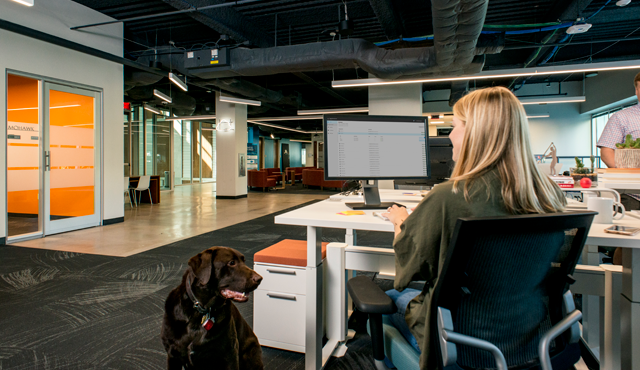We’re calling it. We’ve been in the business of backing up your SaaS data for many years now. And while there’s never been a time when cloud-to-cloud backup should not have been a priority, we think that, in 2018, the need for SaaS data backup is more important than ever. So, in addition to being the Year of the Dog, we believe 2018 is also the Year of SaaS Data Protection.
Why? From upcoming data privacy regulations, including GDPR, and increasing instances of ransomware attacks to the rapid adoption of SaaS applications by the mid-market and enterprises, the next 12 months will shine a spotlight on the need for comprehensive data protection and compliance.
To better see the road ahead, we’ve tapped some of our best and brightest here at Spanning to share their predictions for 2018. One thing is clear, however…the events of the coming year will shape the enterprise for many more to come.

On Data Privacy Regulations
“With organizations in the EU and Australia preparing to meet strict data privacy regulations in 2018, the US will be woefully behind, struggling after each wave of major breaches threatens to cripple everything from telecommunications, healthcare and even government. US-based organizations need to shift from being reactive to being proactive, and that this can begin immediately for any organization that touches data— even SMBs that interacts with EU payment data need to prepare, as any instance of interaction with European data requires strict GDPR adherence. By implementing higher security standards, greater than minimum compliance standards, all business owners will save time and money and perhaps even their businesses, intellectual property and avoid a data breach.”
Brian Rutledge, Principal Security Engineer
Adoption of SaaS by the Mid-Market and Enterprise
“The thing that I’m most excited about from technology in 2018 is the rapid adoption of SaaS by the mid-market and enterprises. It used to be you had to make the case for cloud; now, we see that almost all organizations are putting “on-prem” as a last resort. In 2016 and 2017, we saw a lot of organizations planning, budgeting and piloting their migrations to SaaS applications. In 2018 and beyond, the migrations are going to be executed at an amazing rate—and, as a result, the need for cloud-to-cloud backup will continue to grow.”
Mat Hamlin, VP of Products
Business Evolution = Breaking Barriers to Innovation
“The move from on-premises to SaaS has spurred a business evolution that has not only impacted customers’ expectations, but also spurred demands from employees to be challenged and motivated, keeping pace with the speed of innovation. Unfortunately, in many organizations, the IT department is still seen as a barrier to innovation. In order to safeguard data, these teams create restrictions to web and file access to a draconian degree. Security and compliance should be force multipliers, not diminishers of innovation. As these organizations transform their archaic decision-making processes, they must focus on empowering employees, while still ensuring that data is safe and secure. And one of the best ways to accomplish that – SaaS data backup.”
Mike Pav, Senior VP of Operations
A Factor of Three:
“The battle for cloud dominance (Amazon, Microsoft and Google) will continue in 2018 causing some larger organizations to hedge their bets by using all three. By hedging their bets and going with all three, however, companies are more likely to build to the lowest common denominator rather than leveraging the strengths and functionality of a particular vendor. It puts a lot of pressure on the Dev/DevOps teams to adopt a new cloud platform.”
Andrea Adams, VP of Engineering
Microsoft Office 365’s New Services
“I’m excited about some of the new functionality that Office 365 and Microsoft are bringing to the table. Microsoft Teams is a great collaboration tool that brings together chat, intranet, shared files, project visibility and more. They also launched Planner, an easy to use Kanban tool, and Bookings for scheduling appointments. As they continue to invest and create new services in their platform, customers are adopting it quickly, and that willingness to adopt new services fundamentally improves the way they work.”
Mat Hamlin, VP of Products